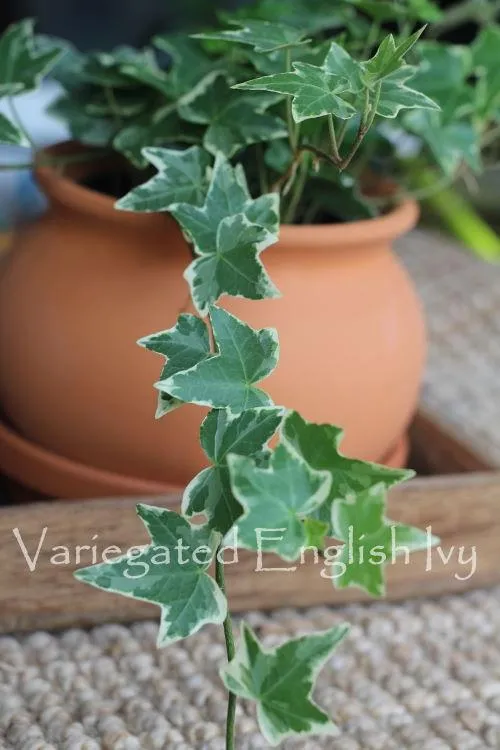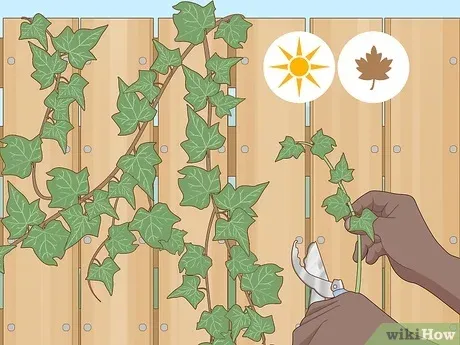How Often Should You Water Ivy Plants: A Complete Guide
If you’ve brought an ivy plant home and are wondering how often to water it, you’ve come to the right place. In this article, I’ll cover all the basics of ivy care including watering frequency, signs that it needs water, and tips to keep your ivy happy and healthy. By the end, you’ll know exactly how often to give your ivy a drink.
The General Rule for Watering Ivy
As a general rule, most varieties of ivy prefer to dry out slightly between waterings. You’ll want to water when the top inch or two of soil is dry. From my experience caring for many ivy plants over the years, this works out to be around once a week for most indoor ivy varieties.
However, the exact watering frequency can vary depending on factors like the ivy type, pot size, light conditions, and climate. So it’s a good idea to check the soil regularly and water when dry rather than sticking to a set schedule. Overwatering is more common than underwatering for ivy.
Signs Your Ivy Needs Water
Here are some noticeable signs that it’s time to give your ivy a drink:
- The top soil is dry – stick your finger an inch down to check for dryness.
- Leaves start to look droopy or wrinkled instead of perky.
- Leaves may start to turn pale green or yellow on the edges.
If you notice any of these signs, it means the ivy’s soil has dried out too much. Go ahead and water thoroughly until the excess runs out the drainage holes.
Adjust Watering Based on Ivy Variety
While the general once-a-week guideline works for many ivies, some varieties have slightly different water needs. Here are a few examples:

English ivy: This vine-like variety thrives in high humidity and loves moist soil. Water whenever the top inch is dry.
Swedish ivy: Can tolerate slightly drier conditions. Let the top 2 inches dry out between waterings.
Creeping fig: Very prone to root rot if overwatered. Only water when topsoil is completely dry.
Hedera helix: Adaptive ivy that’s fairly drought-tolerant. Water around once a week.
So in summary, english ivy likes to stay consistently moist while creeping fig wants to dry out more. Get to know your specific ivy’s needs.
Consider Other Watering Factors
In addition to ivy variety, a few other factors influence watering frequency:

- Pot size – Ivy in smaller pots will dry out faster than in larger containers.
- Light exposure – Ivy in very bright light may need watering a couple times a week.
- Temperature – Water more in very warm rooms where soil dries out quicker.
- Humidity – Ivy enjoys moderate humidity so mist leaves occasionally if air is very dry.
Play around with the watering based on these conditions to keep your ivy happy. The goal is to prevent both overwatering and severe drying out between waterings.
Tips for Proper Watering Technique
When you do water your ivy, follow these tips for best results:
- Water thoroughly until it drains out the bottom. This ensures the entire root zone is moistened.
- Use room temperature water as cold can shock the roots.
- Pour water slowly over the entire pot surface rather than targeting one spot.
- Empty any outer saucer or tray within 30 minutes so the roots don’t sit in water.
Proper watering like this helps keep ivy leaves lush and roots healthy. Avoid getting water trapped in leaf axils which can lead to rotting.
Adapting Watering for Seasonal Changes
Your ivy may need some watering adjustments throughout the year to match its needs:
- Winter – Water only when topsoil is very dry as ivy goes semi-dormant.
- Spring – Increase water as new growth resumes but still avoid overwatering.
- Summer – Water more frequently, possibly every 5-7 days in warmer rooms.
- Fall – Gradually reduce watering as days shorten and growth slows.
Pay attention to your specific conditions each season. Micro-adjust water as needed to keep soil moist but not soggy wet.
Watering Troubleshooting and Advice
If you notice any watering issues like brown edged leaves or drooping, here are some things to try:

- Check soil moisture with your finger before watering to avoid over-watering.
- Repot ivy into well-draining potting mix if roots appear crowded or soggy soil persists.
- Group plants of similar needs together so you can water appropriately for all at once.
- Consider a pebble tray or humidity tray to raise the humidity around your ivy.
With some experimenting, you’ll get comfortable knowing your individual ivy’s watering signs. Don’t be afraid to under-water a little at first rather than risk root issues from overwatering. Your ivy will thank you!
Final Watering Tips
To summarize the basics:
- Water when the top 1-2 inches of soil are dry
- Check individual variety needs as some like more or less moisture
- Adjust based on light, temperature, season and pot size
- Water thoroughly but allow good drainage
- Avoid getting leaves wet to prevent rot
Following these guidelines will keep your ivy plant growing strong and its foliage vibrant green without any watering issues. Let me know if you have any other questions! Proper care will have your ivy thriving for many years.
Ivy Watering Frequency
| Season | Watering Frequency | Soil Moisture |
|---|---|---|
| Spring | Every 5-7 days | Allow top 1-2 inches to dry out between waterings |
| Summer | Every 3-5 days | Keep soil moist but not soggy |
| Fall | Every 7-10 days | Allow top 1 inch to dry out between waterings |
| Winter | Every 10-14 days | Only water when top inch of soil is completely dry |
| New Growth | More frequently | Water whenever top inch is slightly dry |
FAQ
-
How often should I water my ivy plant?
Ivy plants need regular watering. During the growing season, water whenever the top inch or so of soil feels dry. Basically that’s about once a week. However, in the winter when growth slows down, scale back watering to every couple weeks or so. The key is giving your ivy just enough water to keep the soil slightly moist.
-
Do ivies need direct sunlight?
Ivies can grow in partial shade but do appreciate some direct sun each day. Kind of like a cat nap in the sun, too much shade and the leaves may lose their color. Aim to put your ivy plant in a spot that gets at least a few hours of sunlight daily. At the same time, too much full sun can crisp the leaves so a spot with morning sun and afternoon shade seems to work best.
-
How often should I fertilize my ivy plant?
During the growing period from spring to fall, fertilize your ivy plant every 4-6 weeks. You can use a houseplant fertilizer that’s diluted to half strength. Strong fertilizer can actually damage ivy roots. Nevertheless, it’s important to give your ivy a boost of nutrients during active growth times. Cut back on fertilizing in the winter when growth slows.

-
How do I know if my ivy needs repotting?
A few signs that your ivy may need a larger pot include very tight roots crowding the drainage holes, plants that are not growing well or flowering, and soil that seems packed. Dig your fingers down about an inch and if the soil is solid, it’s time for a size up. On the other hand, if the plant is thriving with room to spread, there’s no rush to repot. Wait until growth is constrained before upsizing the container.
-
Does ivy need pruning?
Most ivy varieties do not require pruning but you can trim yours to maintain a particular shape or size. Prune deciduous ivies like English ivy right after flowering in early spring. Cut back any straggly or leggy growth. As for evergreen types, simply snip off any damaged or drying out stems throughout the year. Despite needing little maintenance, a light trim here and there keeps ivy looking bushy and full.
-
What common pests affect ivy plants?
Spider mites and scale insects seem to appear a lot on ivies. Spider mites spin fine webbing on the undersides of leaves and can cause leaf drop. Scale hides under a hard armor and sucks sap from stems and leaves. Strong jet of water may help dislodge pests, or perhaps neem oil or insecticidal soap may do the trick. But is it worth it to use chemicals on such a sturdy plant? Ivy’s tough nature often means pests are rarely fatal.
